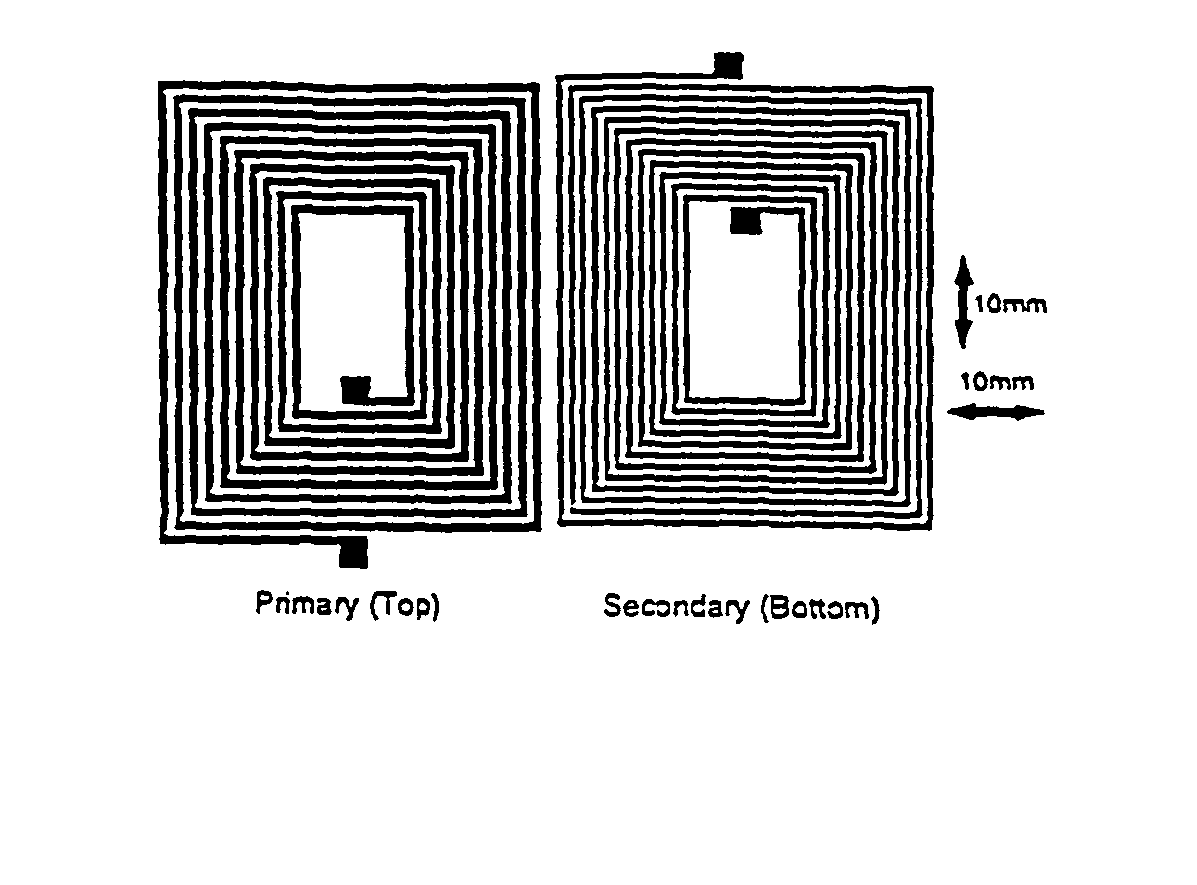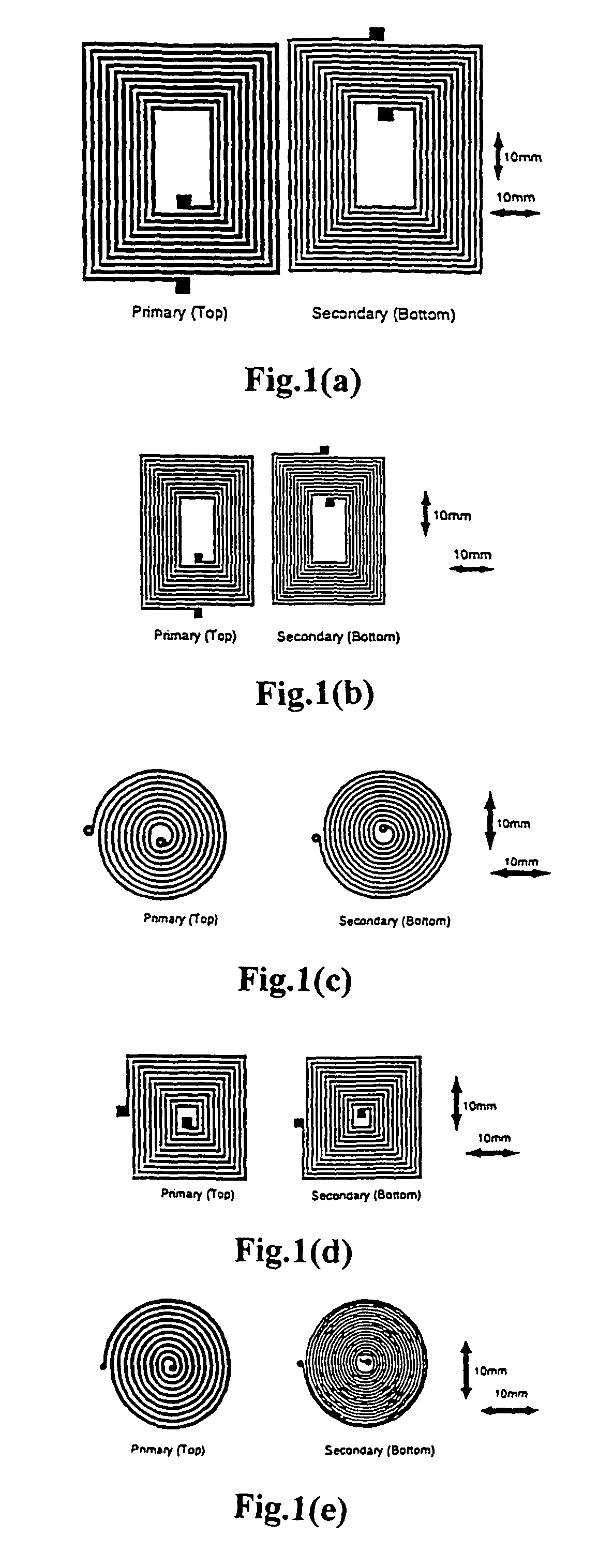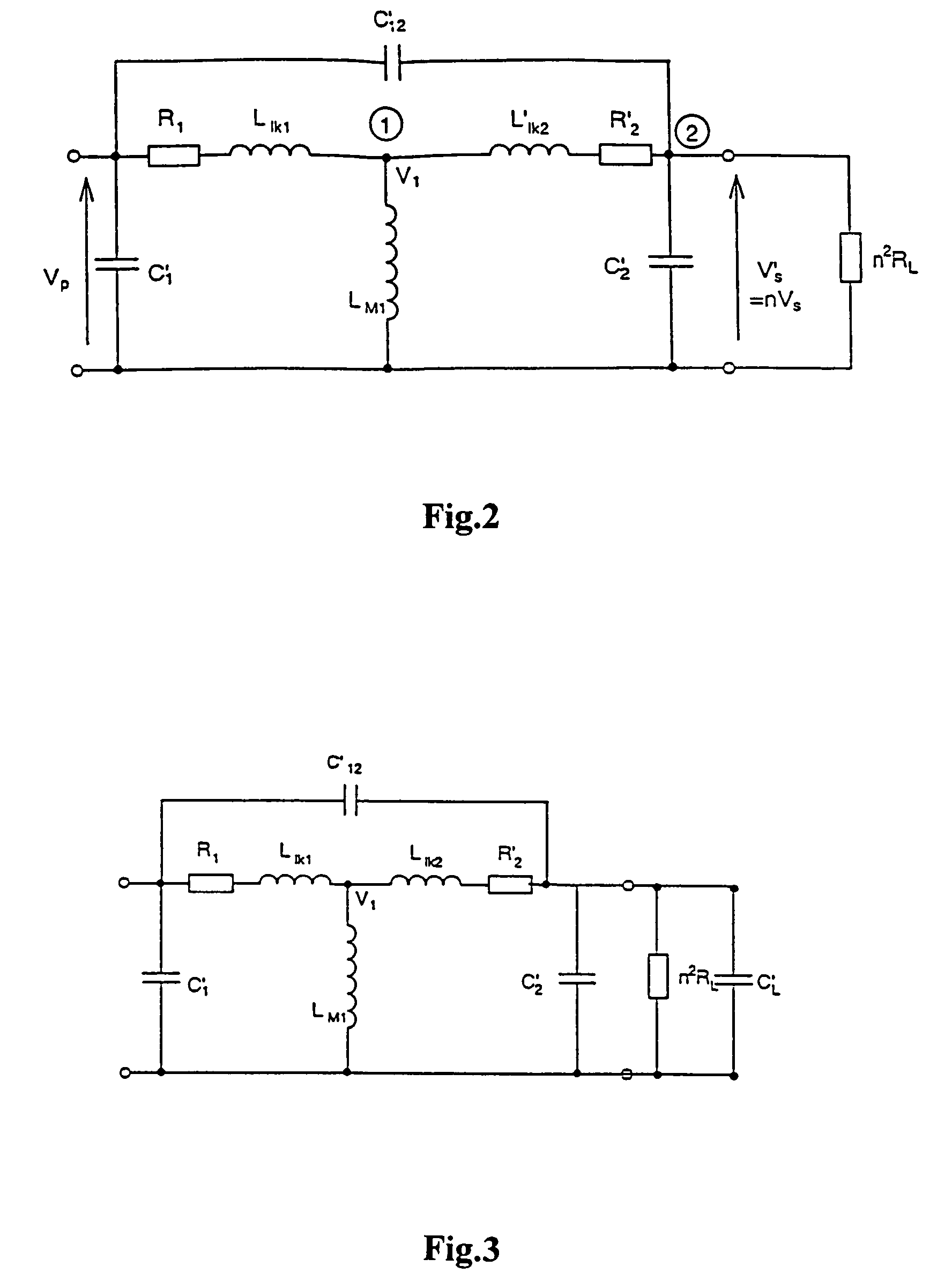Coreless printed-circuit-board (PCB) transformers and operating techniques therefor
a technology of printed circuit board and transformer, which is applied in the incorporation of printed electric components, fixed transformers or mutual inductances, and inductances, etc. it can solve the problems that the commonly used ferrite rings cannot be used in the bourgeois society, and achieve the effect of reducing costs, ensuring stability and ensuring reliability
- Summary
- Abstract
- Description
- Claims
- Application Information
AI Technical Summary
Benefits of technology
Problems solved by technology
Method used
Image
Examples
Embodiment Construction
[0064]FIGS. 1(a)-(e) illustrate five transformers in accordance with embodiments of the invention. Each figure shows the primary and secondary “windings” side by side. In practice, of course, the primary and secondary windings are deposited by conventional PCB techniques on top and bottom sides of a PCB of a thickness of 1.54 mm. The primary and secondary windings are laid directly on opposite sides of the double-sided PCB in order to minimise the leakage inductances. The transformers of FIGS. 1(a)-(d) have 10 turns in the primary winding and 12 in the secondary winding. The additional two turns in the secondary winding are to compensate for the voltage drop. The transformer of FIG. 1(e) has 10 primary turns and 18 secondary turns. The dimensions of the transformers are schematically indicated in the Figures. The transformer of FIG. 1(a) corresponds to that of Bourgeois but with the ferrite core removed.
[0065]All five transformers of FIGS. 1(a)-(e) are capable of driving power devic...
PUM
| Property | Measurement | Unit |
|---|---|---|
| frequency | aaaaa | aaaaa |
| frequency | aaaaa | aaaaa |
| frequencies | aaaaa | aaaaa |
Abstract
Description
Claims
Application Information
 Login to View More
Login to View More - R&D
- Intellectual Property
- Life Sciences
- Materials
- Tech Scout
- Unparalleled Data Quality
- Higher Quality Content
- 60% Fewer Hallucinations
Browse by: Latest US Patents, China's latest patents, Technical Efficacy Thesaurus, Application Domain, Technology Topic, Popular Technical Reports.
© 2025 PatSnap. All rights reserved.Legal|Privacy policy|Modern Slavery Act Transparency Statement|Sitemap|About US| Contact US: help@patsnap.com



